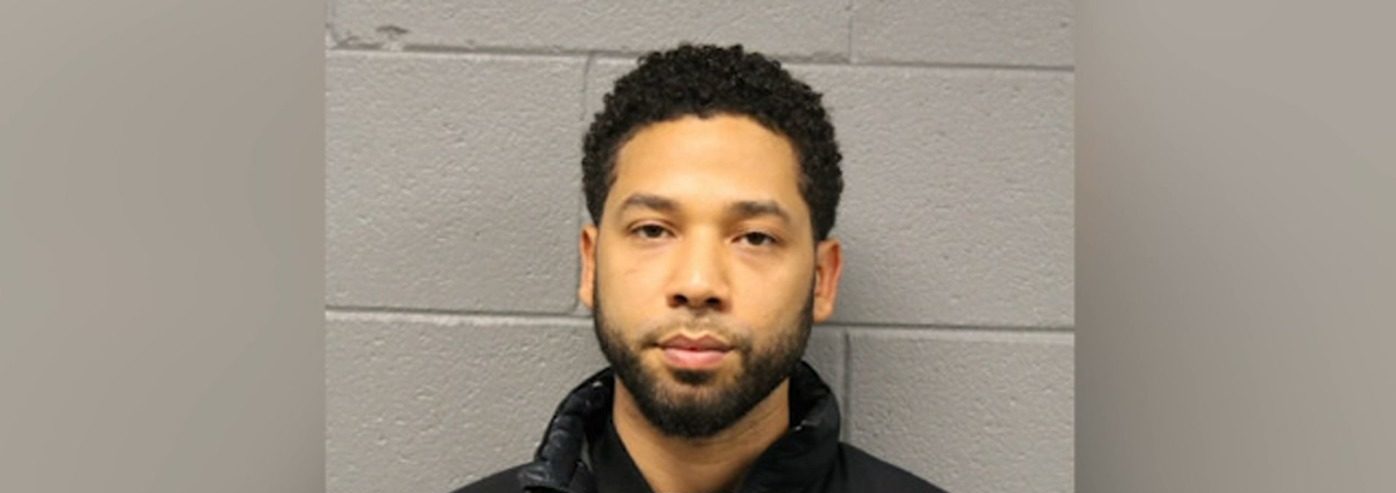The anatomy of a fake news story
No sooner had the media been roundly chastised for buying into one fake news story (that of the Covington High School kids) than it immediately began promoting another – the supposedly hate crime against Empire actor Jussie Smollett. And, in this case, we have a striking example of the incredibly iffy relationship between journalists and fake news – how did it possibly become such a major news story, and how are the media reacting now it has been proven to be a lie?
In case you missed the story, Smollett alleged that he was attacked in January in Chicago by two white men wearing red hats who abused him for his race and his sexuality (Smollett is black and gay). These men supposedly threw a clothesline (in the shape of a noose) round his neck, poured bleach on him and shouted “This is MAGA country!” – Smollett returned to his hotel, and called the police 40 minutes later. Now, there were some gaping holes with the story – the length of time taken to call the police, the fact that Chicago is a notoriously liberal city and hardly MAGA country, that Smollett somehow held onto a Subway sandwich throughout an attack, that he refused to turn over phone records that he claimed supported his story – the list goes on.
It seems that Smollett was dissatisfied with his wage […], and believed that being the victim of a hate attack would give him powerful bargaining power
Despite many issues with the story, the media were very keen to run with it. ABC’s Good Morning America did a softball interview with Smollett, in which anchor Robin Roberts refused to call his story ‘alleged’ or it anyway imply that it may not be true. CNN leapt on it, with anchor Brooke Baldwin lamenting that “this is America in 2019”, and national correspondent Ryan Young presented the case from Smollett’s viewpoint, presenting the victimisation as a given.
Now, it transpires that the case was a hoax – Smollett has been arrested for filing a false police report, after it turned out that he knew the two men who assaulted him and that he’d actually written a cheque paying them for their part in the assault. It seems that Smollett was dissatisfied with his wage (there were rumours that he was also being cut from the show), and believed that being the victim of a hate attack would give him powerful bargaining power.
The story suited a mainstream media narrative about race and Donald Trump, and so (despite many obvious questions that ought to have been asked) that were happy to believe it
It was time for media damage control. Roberts now referred to the attack as “alleged” and ABC legal analyst Dan Abrams noted that the media “wanted to believe” Smollett (he claimed that the coverage was fair because the interview mentioned “sceptics”, although only to dismiss them entirely). Over at CNN, Alisyn Camerota claimed that the network was sceptical of the story from the start (something that was obviously untrue if you watched literally any of its coverage) and Brian Stelter said there was a “rush to judgement, mostly in the celebrity press and among Twitter people”, whereas “it was a really careful reporting by news organisations”. The producers of Empire announced that they are considering suspending him
The most appalling example of media coverage came curtesy of CNN news anchor (and supposed impartial journalist) Don Lemmon. Lemmon admitted openly that he was texting Smollett every day to offer him support. He said that “he knew everyone would be picking apart [Smollett’s] story, but that’s not my concern […] I just want to know that you’re doing okay. If you need somebody, you can talk to me”. Not asking questions of a major story that doesn’t add up seems to me like the opposite of journalism – not that that bothered Lemmon, of course. No, he was more worried that the story would prove beneficial for (opinion journalists) Tucker Carlson and Sean Hannity, as well as President Trump.
I want my journalism to be as factually correct as possible – journalists have a duty to not report dubious stories because they desperately want them to be true
The approach that the media has taken has changed in response to the different turns, but the substance is essentially the same. When Smollett was believed, it was a case of how President Trump had inflamed race tensions to such a point that such an incident could take place – when the story was proven false, the media asked how bad Trump’s America was that such a story seemed believable. At no point did the idea of actually doing some journalism appear – no, the story suited a mainstream media narrative about race and Donald Trump, and so (despite many obvious questions that ought to have been asked) that were happy to believe it.
What has the media learned from the Jussie Smollett case? Not that evidence is good and that a story likely isn’t true if it suits your narrative too perfectly, no – if that was the case, they’d actually have accepted some blame for what was more blatantly propaganda than objective news. I want my journalism to be as factually correct as possible – journalists have a duty to not report dubious stories because they desperately want them to be true.

Comments